Abu Dhabi RTA, aka ITC, has revised the permissible speed limits on the E11 and E20 highways. The new speed limits are lower by up to 20 km/h than the previous limits.
Read below why the speed limits have been dropped on these highways and what the new speed limits are.
Meanwhile, you can also check out the best quality used sedan cars in the UAE for highway driving with CARS24.
Also read: 2025 Toyota Land Cruiser Prado all variants explained
Abu Dhabi E11 highway new speed limit details

The Sheikh Khalifa bin Zayed International Road, aka E11, has been one of the most critical highways in the UAE. It is not only strategically important, but it also connects the two big cities, i.e. Abu Dhabi and Dubai.
Earlier, the E11 had a speed limit of up to 160 km/h for private cars. However, the new speed limit has dropped by 20 km/h, thus taking the new permissible limit to 140 km/h.
The E11 highway has been under long scrutiny for expansion plans and traffic regulation. The primary reason behind the drop in the speed limit is the heavy traffic congestion of daily commuters and growing crash rates.
Additionally, Abu Dhabi authorities have been closely monitoring the growing residential space between the Abu Dhabi Industrial City and Sheikh Shakhbout Medical City, two pivot points which the E11 connects.
Also read: 2026 Toyota RAV4 new images released before launch - What to expect?
Abu Dhabi E20 highway new speed limit details
Meanwhile, the E20, or also known as the Sweihan Road, has also undergone a 20 km/h cut on its earlier speed limit of 120 km/h for private vehicles. As per the official details, the new permitted speed limit on this highway is now 100 km/h maximum.
This road is an important connecting road as it connects the central Abu Dhabi to the outskirts of the city. Hence, it witnesses huge traffic congestion during the peak hours.
The reason behind the new lower speed limit implementation is clear: safety and traffic management.
Important things to note

- With the new lowered speed limits imposed, the Abu Dhabi Police is strictly going to monitor the traffic. Any car driver found going above the speed limit will face dire consequences including hefty fines.
- Therefore, we advise drivers to use the GPS as much as possible, drive slowly, and make sure to read the road signs closely for the varying speed limit zones.
- Additionally, make sure to remain updated through the official Abu Dhabi ITC social media and website portals for any further changes to the rules and regulations.
Our conclusion
The new speed limits for the E11 and E20 highways are best-suited for a safe commute and better traffic management. The higher speed limit was deserved earlier due to the lower traffic density. However, the residential space and population have radically increased in the UAE, and as a result the number of crashes have also hiked. The new speed limits will ensure safety of the road passengers.
FAQs
1. Has the speed limit on the Abu Dhabi E11 and E20 highways been lowered in 2025?
Yes, the speed limit on the Abu Dhabi E11 and E20 highways has been lowered by 20 km/h in May 2025.
2. What is the new speed limit on Abu Dhabi E11 Sheikh Khalifa bin Zayed Road?
The new speed limit on the Abu Dhabi E11 highway is now 140 km/h. It was earlier 160 km/h.
3. What is the new speed limit on Abu Dhabi E20 Sweihan Road?
The new speed limit on the Abu Dhabi E20 highway is now 100 km/h. It was 120 km/h earlier.
4. What is the traffic fine for overspeeding in Abu Dhabi?
The traffic fine for overspeeding in Abu Dhabi varies from AED 30 to AED 3,000. Dangerous driving can also lead to black points or revocation of the driving license and even impounding of the vehicle. In severe cases, the authorities can also arrest the drivers.







